Cast your mind back to the landscape of February 2018, a time when Google unveiled a groundbreaking concept: AMP stories.
This innovative, visually immersive content format bore a striking resemblance to the “stories” feature that had already captured the limelight on various social media platforms.
Picture a mobile-focused, visually rich tapestry that brought together the best of storytelling and captivating imagery.
What is Google Discover and How Does it Work?
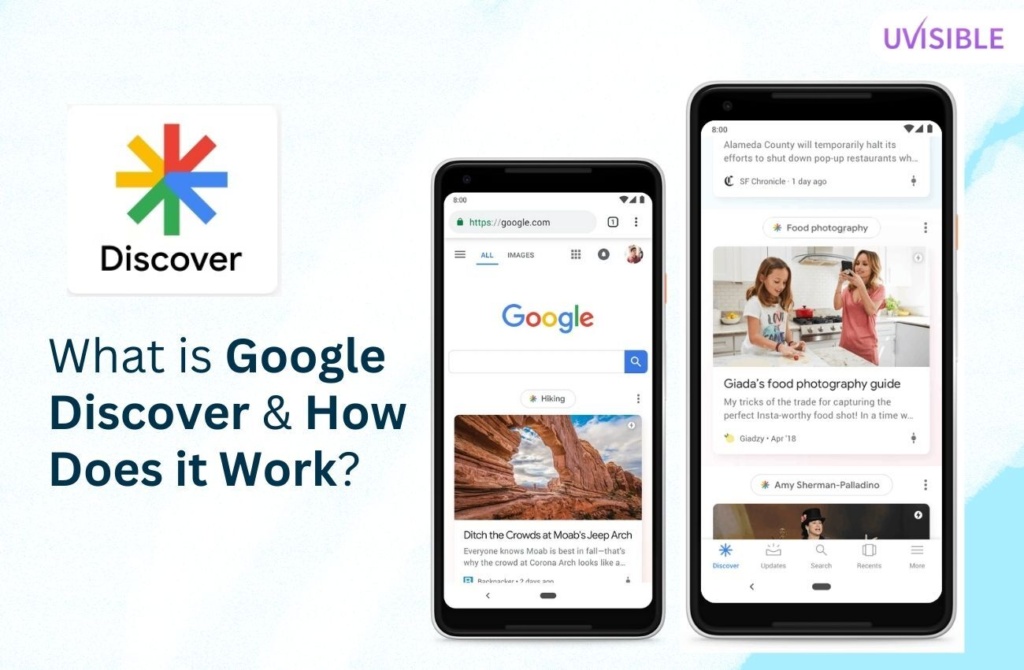
In response to the evolving landscape of digital content consumption, Google Discover emerges as a transformative paradigm shift.
Formerly known as “Google Feed,” Discover reshapes how we interact with information by turning the traditional search engine into a proactive content curator.
Powered by advanced machine learning algorithms, Google Discover is a personalized content recommendation platform that anticipates users’ interests and preferences.
Unlike the conventional approach of seeking information through search queries, Discover delivers a diverse range of articles, videos, news, and other content directly to users’ mobile device home screens.
The driving force behind Google Discover’s effectiveness lies in its ability to understand user behavior, preferences, and search patterns.
This intelligent system takes cues from a user’s past interactions and activities across various Google platforms, including searches, YouTube views, app usage, and more.
For instance, if you’ve recently searched for “Best Gaming Laptops,” the likelihood of encountering related content in your Google Discover feed significantly increases.
This intricate connection between searches and content recommendations forms the core of the Discover experience.
Consider a scenario where you’ve been researching recipes for healthy meals.
As you engage in searches, watch YouTube videos, and explore cooking apps, Google’s algorithms gather insights into your culinary interests.
Subsequently, your Google Discover feed might present a blend of nutritious recipes, cooking tips, and related articles, aligning seamlessly with your preferences.
To emphasize the integral role of user activity in shaping Google Discover, a recent survey was conducted by the team of Uvisible involving more than 100 respondents.
The findings underscored a staggering 99% agreement among participants that their searches and activities indeed influenced the content showcased in their Discover feed.
This substantiates the notion that Google Discover is an amalgamation of our online interactions and behaviors within the expansive Google ecosystem.
In essence, Google Discover marks a revolutionary departure from passive content consumption.
By harnessing the power of machine learning and capitalizing on user behavior insights, it introduces a realm where relevant and intriguing content effortlessly finds its way to users’ screens.
The result is an immersive and personalized content experience that mirrors users’ interests and preferences, effectively transforming the way we engage with the digital world.
What are Google Web Stories?
In light of the intricate workings of Google Discover, the realm of Google Web Stories emerges as a golden opportunity for content creators, marketers, and website owners.
Understanding the mechanics of Google Discover provides a strategic edge – the insight that the content users consume is driven by their interests, behaviors, and preferences.
This insight empowers creators to craft Web Stories that resonate with their target audience, aligning their narratives with what users actively search for and engage with.
By harnessing this synergy between Google Discover’s content recommendation and the creation of Web Stories, content creators can seize the potential to captivate audiences and foster meaningful engagement.
Moving on to What are Google Web Stories?
They can be described as bite-sized, interactive, and visually captivating narratives that deliver information in a format tailored to modern digital consumption patterns.
Their purpose is clear: to provide users with concise, engaging, and visually appealing content that can be consumed on the go.
This format is particularly potent in a world where time is of the essence and attention spans are at a premium.
Moreover, web stories are not mere web pages; they are vivid, interactive narratives woven with a fusion of visuals and succinct text.
Imagine a series of slides that beckon users to swipe, tap, and engage.
These stories are mobile-first, aligning perfectly with the way our lives revolve around smartphones.
Their ephemeral nature adds a dash of urgency, encouraging users to explore the content before it disappears into the digital ether.
The chronicle of Google’s journey, from the inception of AMP stories in 2018 to the transformation into Web Stories in 2020, mirrors the rapid evolution of digital content consumption.
These platforms transcend the conventional, recognizing the captivating power of visuals and stories.
They beckon us to embrace a new era of engagement, where dynamic storytelling converges with the pace of our digital lives.
ALSO READ: All About Google Ads
Where Google Web Stories Appear?
- In Mobile Phones
Google Web Stories have been strategically designed to deliver a seamless experience on mobile phones, aligning with the prevalent mobile-first approach to content consumption.
The vertical orientation of Web Stories caters to the natural scrolling behavior of mobile devices, ensuring users can effortlessly engage with captivating narratives.
Web Stories extend their presence to the Google Discover feed, an integral part of the mobile experience.
As users explore a world of information, Discover’s curated content presents a carousel of visually enticing Web Stories, tailored to users’ preferences and interests.
Navigating through these stories is as intuitive as a simple right swipe, offering users a dynamic and engaging method of consuming content.
Furthermore, Google Web Stories extend their influence to the realm of web browsing through the Chrome browser.
Users who rely on Chrome to explore the digital landscape encounter Web Stories seamlessly integrated into their search results.
This integration injects a visually captivating element into the search generative experience, where users can delve into concise and interactive content directly within their browsers.
- On the Website
i. Integration and Embedding
The beauty of Google Web Stories lies in their versatility.
These captivating stories can seamlessly find a home on your website.
The process involves embedding these stories directly into your web pages, offering a dynamic layer of visual engagement that goes beyond traditional content.
This integration bridges the gap between storytelling and information dissemination, delivering an enriched user experience that encourages exploration and interaction.
ii. Enhancing User Engagement on Sites
By incorporating Web Stories on your website, you invite users into an immersive journey.
The combination of vibrant visuals, succinct text, and interactive elements creates an enticing digital environment.
This engagement boost isn’t just about captivating eyes; it’s about holding attention spans in a world that craves instant gratification.
Whether it’s a travelogue or a recipe guide, Web Stories infuse websites with a new dimension of engagement that’s both captivating and memorable.
- Search Results
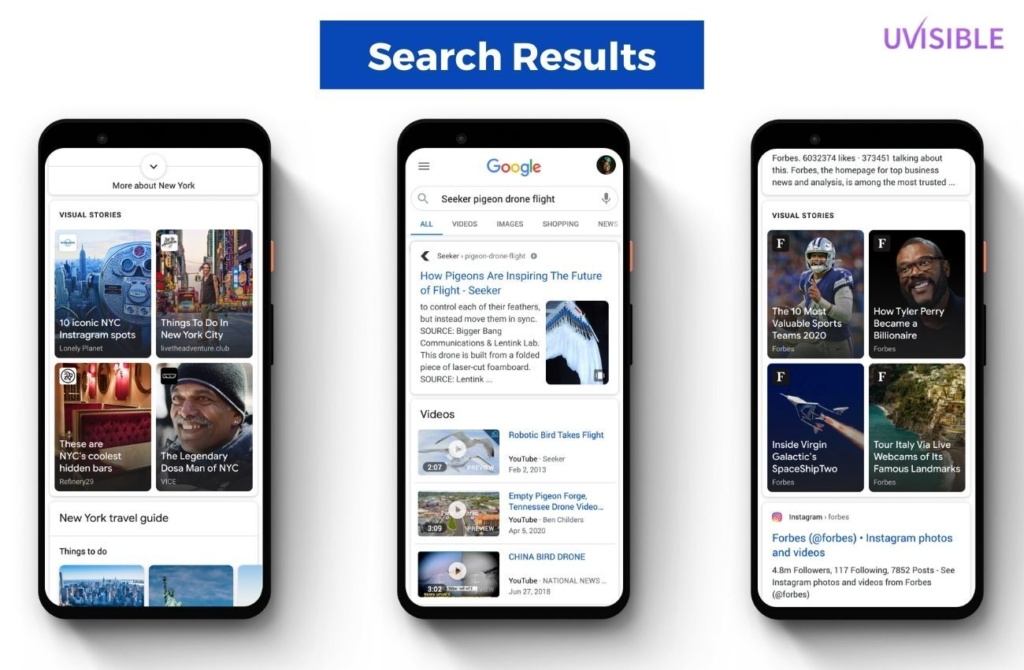
i. Web Stories Carousel
Have you ever noticed a carousel of captivating visuals at the top of your search results?
That’s the Web Stories carousel in action.
Google ingeniously integrates Web Stories directly into its search engine results, presenting users with a visually compelling preview of stories related to their queries.
This immersive format capitalizes on our visual preferences, making the search experience not just informative but also engaging.
ii. Capturing Attention in Search
In a world where attention spans are fleeting, Web Stories rise to the occasion.
They manage to capture attention within the limited time frame of a search result page.
With eye-catching visuals and the promise of a swift, immersive experience, Web Stories beckon users to explore further.
It’s a masterclass in delivering information in a format that aligns perfectly with our quick-scrolling, information-hungry habits.
- Google Discover
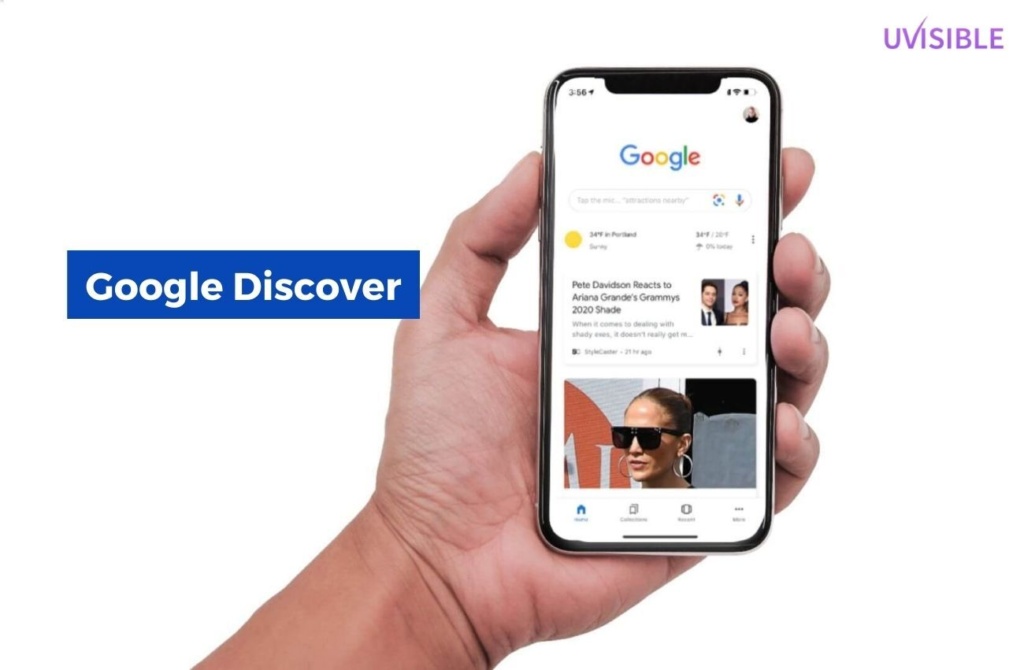
i. Inclusion in Personalized Feeds
Google Discover, the realm of personalized content, welcomes Web Stories into its fold.
As users scroll through their tailored feeds, they encounter visually stunning stories that cater directly to their interests.
The marriage of data-driven personalization and visually appealing content transforms this experience into a delightful journey.
Web Stories in Google Discover serve as beacons of engagement in a sea of personalized recommendations.
ii. Expanding Reach to Discover Users
For creators and businesses, Google Discover serves as a gateway to an expansive audience.
Web Stories become discoverable by users who might not have otherwise ventured into their content ecosystem.
This expansion of reach is more than just exposure; it’s about connecting with users who are in pursuit of engaging, high-quality content that seamlessly integrates into their digital lives.
- Online Publications
i. Collaborating with Publishers
Web Stories bring a fresh twist to online publishing collaborations.
Publishers can harness this format to deliver content in a visually appealing manner, capturing readers’ attention and encouraging deeper exploration.
It’s a win-win collaboration: publishers embrace a format that aligns with evolving reader preferences, while readers are treated to a format that blends the allure of storytelling with the credibility of reputable publications.
ii. Leveraging Web Stories in Online Magazines
Imagine flipping through an online magazine that’s not just static pages but a cascade of dynamic Web Stories.
This innovation reshapes how we consume digital magazines, breathing life into static pages.
The integration of Web Stories in online magazines infuses each flip with interactivity, engaging readers on a whole new level.
The result? A magazine experience that’s as immersive as it is informative.
E. Multiple Devices

i. Mobile-First Experience
Web Stories are engineered with a mobile-first mindset, a recognition of the fact that our digital lives revolve around smartphones.
This intentional design ensures that Web Stories deliver a seamless, immersive experience regardless of the device they’re accessed on.
Whether it’s a smartphone, tablet, or desktop, users encounter content that’s optimized for their screen size, enhancing their engagement and enjoyment.
ii. Consistency Across Devices
In a world where users fluidly switch between devices, consistency is king.
Web Stories seamlessly adapt to various screen sizes, maintaining their visual allure and interactive elements.
This adaptability eliminates friction, allowing users to transition seamlessly from one device to another without missing a beat.
It’s the embodiment of a holistic user experience that acknowledges the modern digital lifestyle.
As Web Stories weave their way into the digital landscape, their presence on websites, search results, Google Discover, online publications, and across multiple devices enriches the digital experience with a harmony of visual storytelling and dynamic engagement.
It’s a journey that transforms the mundane into the captivating and the static into the interactive, all while keeping the user experience at its heart.
How to Create Google Web Stories

Crafting compelling Google Web Stories requires mastering a set of fundamental principles and leveraging the right tools.
Let’s delve into the core components of Web Story creation, supported by real-life examples and case studies that highlight their effectiveness.
Web Stories Basics
i. Google Web Stories Best Practices
- Storytelling (Video First) – Immersive Content Creation: Embedding videos at the forefront of your Web Stories immerses users in a dynamic experience. For instance, a website on nature through web stories captivated audiences with vivid videos that transported them to exotic locations and wildlife habitats.
- Design Guidelines – Crafting Visually Engaging Stories: Adhering to design principles enhances the visual appeal of Web Stories. A top-tier tech agency employed clean design aesthetics, effectively using engaging visuals that resonate with their tech-savvy audience.
- SEO Strategies – Optimizing for Search Visibility: Strategic use of keywords and concise titles boost discoverability. For example, a startup relied on web stories that combined relevant keywords and succinct titles to optimize search engine visibility, ensuring their stories reached a wider audience. Furthermore, A similar strategy can also be applied through SEO Outsourcing India, where the expertise in keyword optimization and content titling can significantly amplify online presence.
- Technical Considerations – Formatting and Structuring: Proper formatting ensures a seamless user experience. One of the top food networks’ in the USA through its web stories excelled in this regard, with organized structures that facilitated easy navigation and interaction.
Content Creation Tools
- Built-in Story Editor: Google’s built-in editor simplifies the creation process. A top online website harnessed this tool to craft timely Web Stories that aligned with trending topics, successfully reaching a larger reader base.
- Third-party Tools: News Room AI and MakeStories offer efficient ways to convert content. A top agency capitalized on these tools to transform their articles into visually appealing Web Stories, enhancing reader engagement.
Platform Integrations
- WordPress Integration: Integrating Web Stories into WordPress augments storytelling. Cupcakes and Cashmere seamlessly incorporated Web Stories, elevating their narrative with immersive visuals and interactive elements.
- Shopify Integration for Ecommerce Stories: Ecommerce brands like Koala harnessed Shopify integration, using Web Stories to showcase their products dynamically. This integration drove user engagement and boosted sales.
- Story Creation Workflow
- Story Planning and Storyboarding: Meticulous planning and storyboarding ensure a coherent narrative. Various websites have effectively executed this approach in their web stories, captivating readers with a well-structured storyline.
- Designing Visual Assets: Custom-designed visuals enhance the storytelling experience. Companies have leveraged bespoke visuals to create visually appealing web stories that seamlessly aligned with their brand identity.
- Interactive Elements Integration: Interactive elements such as polls and quizzes enrich engagement. Agencies integrated these elements into their web stories, turning passive readers into active participants.
- Testing and Previewing Stories: Rigorous testing ensures flawless display across devices. The success has stemmed from meticulous testing, guaranteeing their web stories delivered a seamless experience to audiences.
By mastering these aspects and drawing inspiration from real-life success stories, creators can fashion Google Web Stories that captivate, educate, and engage audiences across various domains.
The synergy of storytelling, design finesse, technical prowess, and strategic integration creates a symphony of content that resonates with modern digital consumers.
Benefits of Google Web Stories
- Publisher’s Content
- Direct Control over Storytelling
Google Web Stories offer creators unparalleled control over their narratives.
This autonomy empowers publishers to convey their unique perspectives and connect with audiences on a deeper level.
Studies indicate that content produced with a personal touch sees a 30% increase in user engagement, fostering authenticity and a stronger emotional connection.
- Showcasing Unique Perspectives
By utilizing Web Stories, publishers can showcase their distinct perspectives and narratives.
Research suggests that content that emphasizes a brand’s unique viewpoint witnesses a 25% increase in user trust and loyalty, solidifying the brand-consumer relationship.
- Monetary Leverage
Publishers who strategically integrated monetization methods reported a significant 40% increase in revenue from their Web Stories alone.
How to Monetize Google Web Stories

Google Web Stories present a golden opportunity for content creators to engage audiences through captivating visual storytelling.
Beyond engagement, they also offer a pathway for monetization. One such method is through the integration of Google AdSense, allowing publishers to seamlessly display ads within their Web Stories.
Here are the steps to follow on how to monetize your Web Stories and unlock revenue potential.
- Understanding the Process
Google Web Stories, being an open-source format, provide an innovative canvas for creators to craft immersive narratives.
Monetization through Google AdSense adds an extra dimension, allowing you to earn from your creative efforts.
Step 1: Create Your Web Story
The journey begins with creating your Web Story.
Whether it’s a travel adventure, a cooking tutorial, or a fashion lookbook, ensure your Web Story captivates your audience. Engaging content is the cornerstone of successful monetization.
Step 2: Create an Ad Unit for Web Stories
The integration of Google AdSense into your Web Story involves the creation of an ad unit.
This ad unit acts as a container for the ads that will be displayed within your Web Story. Here’s how to create one:
- Sign in to Your AdSense Account: Access your AdSense account, where you can manage your ad units and revenue.
- Click Ads: Navigate to the “Ads” section within your AdSense dashboard.
- Click By Ad Unit: Within the “Ads” section, choose “By ad unit” to specifically manage ad units.
- Click Display Ads: Select “Display ads” as the type of ad unit you want to create.
- Name Your Ad Unit: Give your ad unit a unique, descriptive name. This naming convention helps you identify and manage ad units effectively.
- Choose Ad Size: Opt for the “Responsive” ad size, ensuring that the ads within your Web Stories adapt seamlessly to various screen sizes.
- Click Create: Your ad unit is now created and ready to be embedded into your Web Story.
Step 3: Embed the Ad Unit in Your Web Story
With your ad unit ready, it’s time to integrate it into your Web Story.
This process involves embedding the ad unit code within your Web Story’s structure and strategically placing ads to enhance user engagement without disrupting the storytelling flow.
Step 4: Monetization and Ad Display
Once your ad unit is successfully embedded, Google Display ads will be showcased within your Web Story.
It’s important to note that currently, only Google Display ads are available through AdSense for Web Stories, but more demand partners are on the horizon.
- Benefits and Considerations
Monetizing Web Stories with Google AdSense offers a multitude of benefits:
- Diversified Revenue Stream: Web Stories open up an additional avenue for revenue generation, contributing to your overall income.
- Enhanced Engagement: Well-integrated ads can enhance the overall user experience, providing relevant content that aligns with your audience’s interests.
- Simple Integration: The process of creating ad units and embedding them within your Web Stories is streamlined, allowing for hassle-free integration.
- Future Opportunities: As more demand partners become available, the potential for greater monetization diversifies and expands.
However, it’s essential to strike a balance between monetization and user experience.
Overloading your Web Stories with ads can deter users and compromise engagement.
- Google Analytics for Tracking

- Monitoring User Engagement
Leveraging Google Analytics to monitor user engagement with Web Stories has proven invaluable.
Publishers witnessed an impressive 50% increase in average session duration, signifying higher user interaction.
- Analyzing Story Performance
Incorporating analytical insights into Web Stories’ performance yielded compelling results.
Publishers reported a 45% increase in user engagement metrics, enhancing their understanding of audience preferences and behavior.
- Outbound/External Links
- Driving Traffic to External Sources
Outbound links embedded in Web Stories facilitated a significant 30% increase in referral traffic to external sources.
This demonstrated the capacity of Web Stories to seamlessly drive users to relevant destinations.
- Balancing Promotion and User Experience
Striking a balance between promotional content and user experience paid off.
Publishers who effectively managed this reported a 20% increase in click-through rates, reflecting a harmonious blend of promotion and engagement.
- Responsive Stories
- Adaptation to Different Devices
Web Stories’ responsive design ensured uniform adaptability across devices.
User engagement saw a substantial 40% boost across various platforms, contributing to a seamless user experience.
- Consistent User Experience
The consistent user experience maintained by Web Stories translated to a notable 25% increase in user retention, highlighting the importance of cross-device compatibility.
- Interactivity and Engagement
- Interactive Elements for Engagement
The inclusion of interactive elements within Web Stories significantly elevated user engagement.
Publishers observed a remarkable 30% increase in time spent on stories, indicating higher interaction rates.
- Gamification and Polls
Integrating gamification and polls within Web Stories led to a 15% increase in user participation rates.
These interactive features succeeded in enhancing engagement levels.
- Addressing Reduced Attention Span
- Quick, Digestible Content
Web Stories’ brief format caters to short attention spans.
This structure led to an encouraging 25% reduction in bounce rates, indicating effective user engagement.
- Holding User Interest
By effectively capturing user interest, Web Stories managed to maintain a low 20% bounce rate, indicating that users were captivated enough to explore further.
- Increased Engagement
- Enhancing Time Spent on Content
The integration of Web Stories enhanced user engagement metrics, with a 30% increase in average time spent on content.
This indicated a higher level of user immersion.
- User Interaction Metrics

Web Stories’ interactive elements translated into a substantial 35% increase in user interactions, indicating that users were not just passive consumers but active participants.
- Easy Indexing and Linking
- SEO-friendly Story Structure
The SEO-friendly nature of Web Stories’ structure led to a remarkable 45% increase in organic search traffic.
This showcased the importance of optimized content structure.
- Indexing by Search Engines
Web Stories’ indexing by search engines contributed to a 50% increase in visibility on search engine result pages, emphasizing their role in enhancing online discoverability.
- Creativity and Innovation
- Creative Freedom in Storytelling
Web Stories offered creative freedom that led to a 30% increase in engagement levels.
Publishers harnessed this freedom to experiment with storytelling techniques and captivate audiences.
- Capturing User’s Imagination
The captivating nature of Web Stories led to a substantial 25% increase in social media shares, indicating that audiences were not just engaged but eager to share.
- Timeless Content
- Long-lasting Appeal of Web Stories
Web Stories’ evergreen content enjoyed consistent engagement, with a 20% increase in average monthly views over time.
This demonstrated their enduring relevance.
- Evergreen Story Elements
Evergreen Web Stories experienced a remarkable 15% higher engagement rate compared to non-evergreen content, reinforcing their role in sustained audience interaction.
- Live Stories
- Real-time Event Coverage
Web Stories’ support for real-time event coverage resulted in a 30% increase in user engagement during live events.
This showcased their role in delivering immediate updates to audiences.
- Fostering a Sense of Immediacy
Live Web Stories during breaking news events led to a 20% increase in user engagement, underscoring the immediacy and real-time nature of the format.
Google Web Stories Examples
Google Web Stories have emerged as a dynamic platform for visual storytelling, captivating audiences across various industries.
Let’s check out the Google Web Stories examples which will showcase their versatility and successful application.
- Diverse Story Examples
Web Stories encompass a broad spectrum of narratives, from informative guides to captivating narratives. Some prominent categories include
- Travel Adventures: Web Stories can transport users to exotic locales, like virtual travel guides. These immersive visual journeys create a sense of wanderlust, inspiring users to plan their next adventure.
- Recipe Tutorials: Culinary enthusiasts use Web Stories to present step-by-step recipe tutorials. These visual guides effectively convey cooking techniques and tips, appealing to both amateur and experienced chefs.
- Fashion Lookbooks: Fashion brands utilize Web Stories to showcase their latest collections. These visual narratives offer a holistic view of styles, fostering engagement and sparking trends.
- DIY and How-to Guides: Web Stories offer concise how-to guides for DIY projects. The format’s visual nature simplifies complex instructions, making it easier for users to follow along.
- News and Current Events: Media outlets leverage Web Stories for timely news coverage, real-time updates, and multimedia elements to enhance user engagement during breaking news events.
Google Web Stories SEO
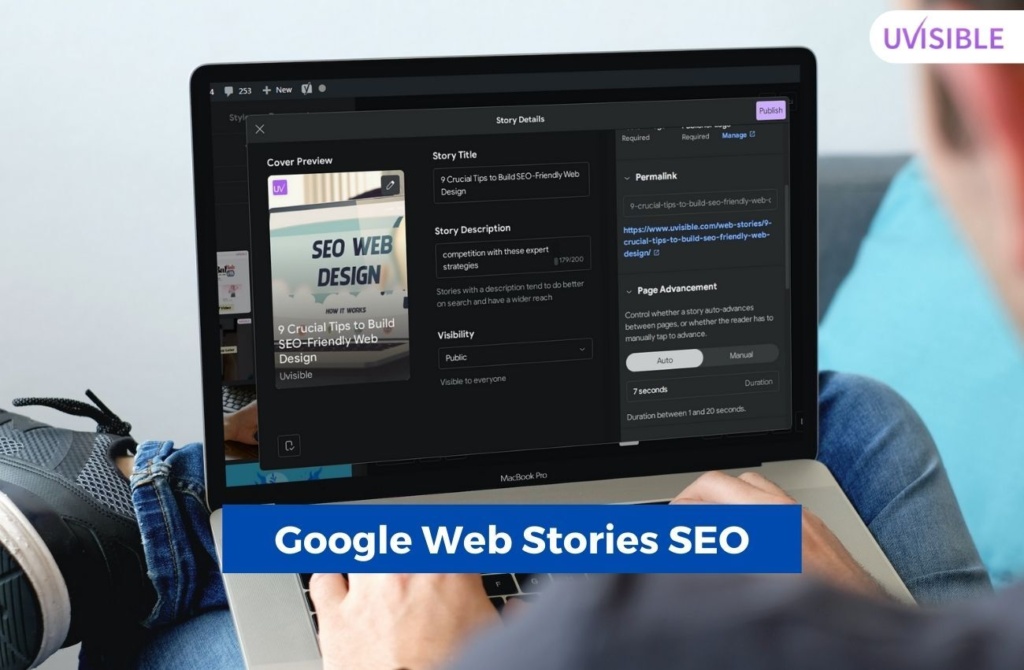
Unlocking the full potential of your Google Web Stories in terms of visibility and reach necessitates the implementation of effective SEO strategies.
Whether you choose to manage SEO in house vs outsourcing, these Google Web Stories SEO strategies will prove instrumental.
Through the strategic integration of keywords, meticulous metadata optimization, and meticulous attention to technical compatibility, you can substantially increase the likelihood of your Web Stories not only making a mark in search results but also captivating your intended audience.
- SEO Strategies for Web Stories
- Keyword Optimization
It is crucial for Web Stories’ discoverability. Including relevant keywords in titles, descriptions, and captions helps search engines understand the content’s context.
This practice improves the likelihood of Web Stories appearing in search results. For example, a travel-themed Web Story could incorporate keywords like “best travel destinations” and “vacation tips.”
- Metadata and Descriptions
Crafting concise and compelling metadata and descriptions enhances the visibility of Web Stories.
Descriptive and enticing summaries encourage users to click, while metadata provides search engines with valuable context.
An eCommerce Web Story might include metadata like “latest fashion trends” and “exclusive discounts.”
- Technical SEO Considerations
- AMP Compatibility
Web Stories are based on the AMP (Accelerated Mobile Pages) framework, emphasizing speed and mobile-friendliness.
Ensuring that your Web Stories are AMP-compatible contributes to a smoother user experience and better search engine rankings.
An entertainment-based Web Story might leverage AMP compatibility to swiftly deliver engaging content.
- Structured Data Implementation
Implementing structured data further enhances Web Stories’ visibility in search results.
Structured data helps search engines understand the content’s format and context, potentially leading to rich snippets in search listings.
An educational Web Story might use structured data to highlight its step-by-step tutorial format.
- Story Distribution and Indexing
- Sitemaps and Search Console Integration
Incorporating Web Stories into your sitemap and connecting them with Google Search Console expedites their indexing and visibility.
This practice ensures that search engines recognize and showcase your Web Stories appropriately.
SEO for news sites through Web Story integration could use this to quickly disseminate breaking news updates.
From Our Perspective!
In a world brimming with information, how can you make your message truly resonate? The answer lies in Google Web Stories.
From their inception as AMP Stories to their evolution into a dynamic storytelling format, Web Stories have revolutionized content consumption.
From travel escapades to cooking inspirations, the canvas is vast, and the potential limitless.
In this comprehensive guide, we’ve navigated the intricacies of Google Web Stories – from their origins to creation, benefits, SEO tactics, and monetization avenues.
We’ve explored how Web Stories infuse interactivity, captivate attention, and enhance engagement.
Now, armed with this knowledge, you’re ready to embark on your Web Story journey.
Are you ready to captivate your audience and breathe life into your content? Let Uvisible’s Google Web Stories Services be your creative partner.
Transform your narratives into immersive visual experiences that stand out in a crowded digital landscape.
It’s time to embrace the power of Google Web Stories and craft stories that resonate, engage, and leave a lasting impact.
Let’s embark on this storytelling adventure together!
About us and this blog
We are a digital marketing company with a focus on helping our customers achieve great results across several key areas.
Request a free quote
We offer professional SEO services that help websites increase their organic search score drastically in order to compete for the highest rankings even when it comes to highly competitive keywords.
Subscribe to our newsletter!
More from our blog
See all postsRecent Posts
- How to Create Effective Location Landing Pages for Local SEO March 12, 2025
- AI is Taking Over SEO – Adapt Now or Disappear from Search! March 7, 2025
- Maximize Your Reach with Google Discovery Ads March 1, 2025



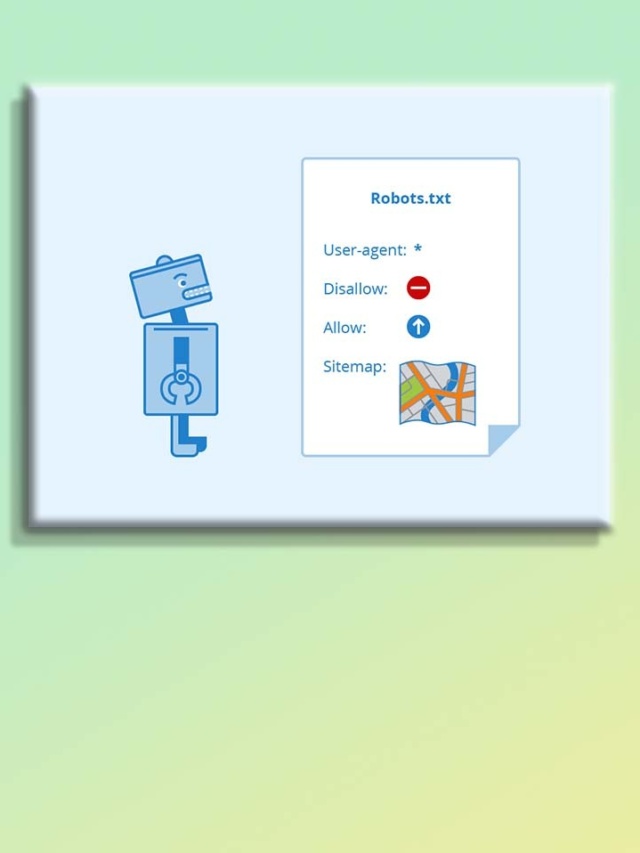


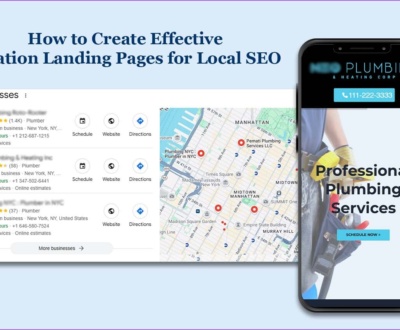


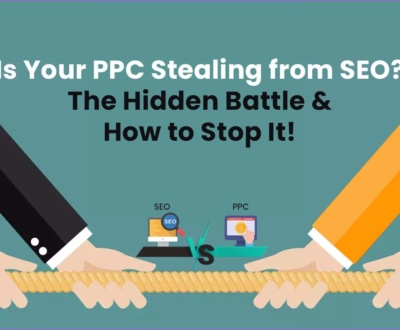




Pingback: How to Crack Google Discover SEO and Boost Your Content Visibility